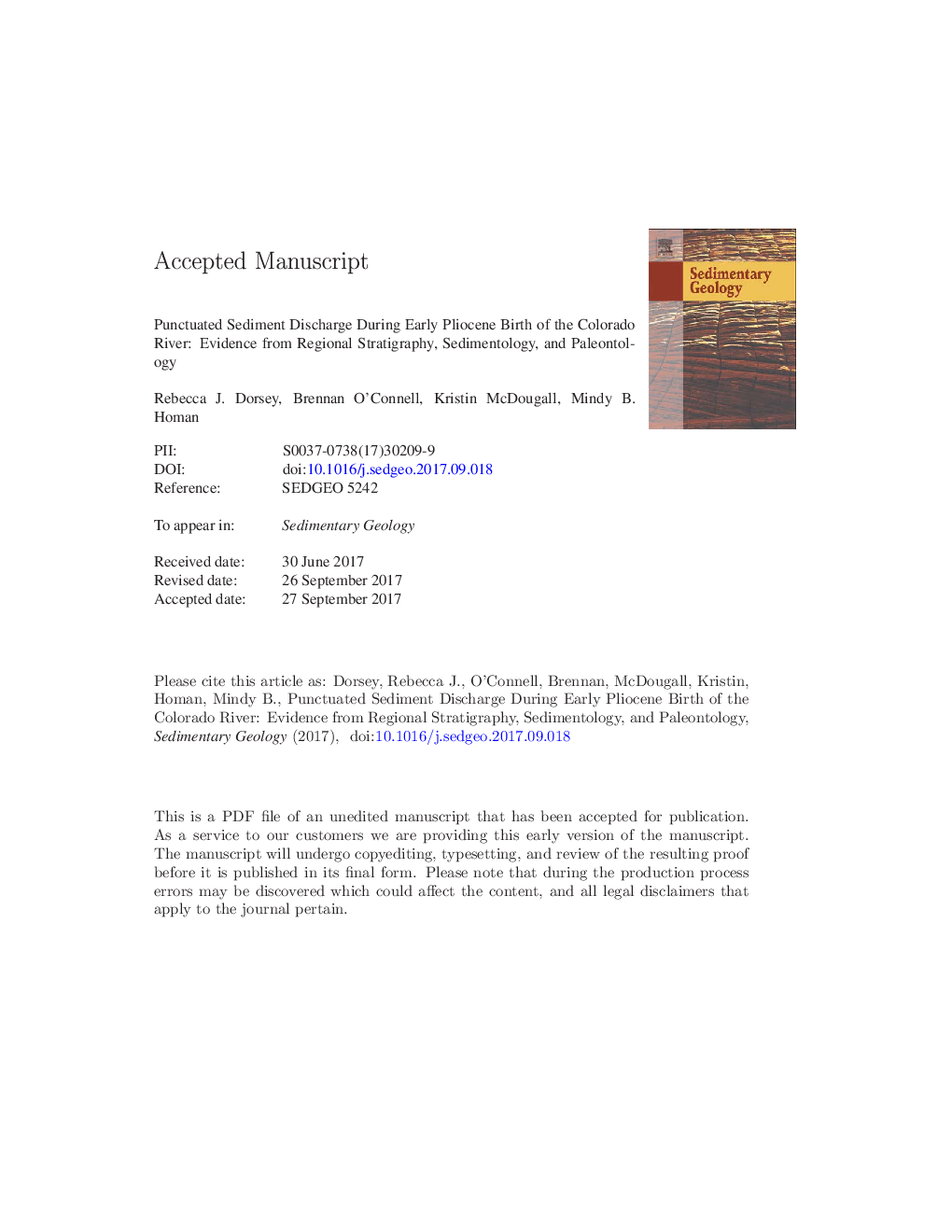| Article ID | Journal | Published Year | Pages | File Type |
|---|---|---|---|---|
| 8908567 | Sedimentary Geology | 2018 | 114 Pages |
Abstract
These results provide evidence for a discontinuous, start-stop-start history of sand output during initiation of the Colorado River that is not predicted by existing models for this system. The underlying controls on punctuated sediment discharge are assessed by comparing the depositional chronology to the record of global sea-level change. The lower Colorado River Valley and Salton Trough experienced marine transgression during a gradual fall in global sea level between ~ 6.3 and 5.5 Ma, implicating tectonic subsidence as the main driver of latest Miocene relative sea-level rise. A major fall of global sea level at 5.3 Ma outpaced subsidence and drove regional delta progradation, earliest flushing of Colorado River sand into the northern Gulf of California, and erosion of Bouse basal carbonate and siliciclastic members. The lower Colorado River valley was re-flooded by shallow marine waters during smaller changes in global sea level ~ 5.1-4.8 Ma, after the river first ran through it, which requires a mechanism to stop delivery of sand to the lower river valley. We propose that tectonically controlled subsidence along the lower Colorado River, upstream of the southern Bouse study area, temporarily trapped sediment and stopped delivery of sand to the lower river valley and northern Gulf of California for ~ 200-300 kyr. Massive progradation of the fluvial-deltaic system back down the river valley into the Salton Trough starting ~ 4.8-4.5 Ma apparently was driven by a huge increase in sediment discharge that overwhelmed the sediment-storage capacity of sub-basins along the lower river corridor and established the fully integrated river channel network.
Related Topics
Physical Sciences and Engineering
Earth and Planetary Sciences
Earth-Surface Processes
Authors
Rebecca J. Dorsey, Brennan O'Connell, Kristin McDougall, Mindy B. Homan,
